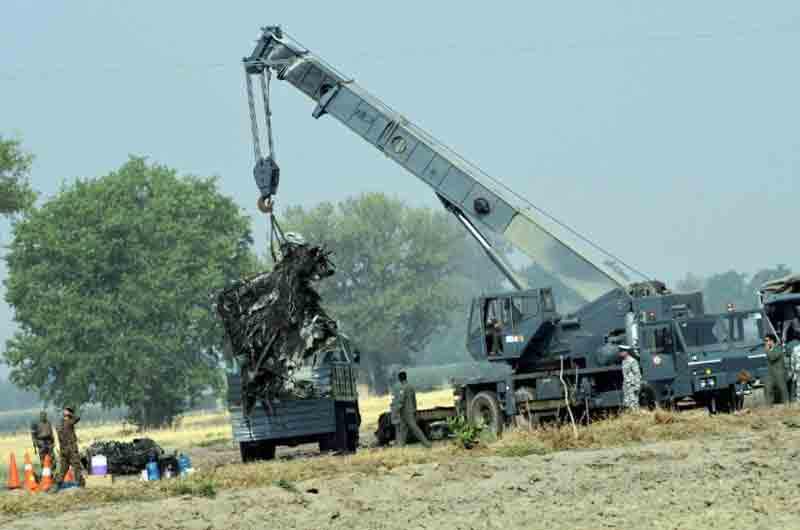The “Grom” Exercises: A Display of Nuclear Might
- Land-Based Component: A RS-24 Yars intercontinental ballistic missile (ICBM) was launched from the Plesetsk Cosmodrome in northwestern Russia, targeting the Kura test range in Kamchatka, near the U.S. border in eastern Russia. The Yars, with a range exceeding 11,000 km, can carry multiple nuclear warheads, making it a potent strategic weapon.
- Sea-Based Component: The nuclear-powered submarine K-117 Bryansk, a Project 667BDRM Delfin-class vessel, fired an R-29RMU Sineva submarine-launched ballistic missile (SLBM) from the Barents Sea, demonstrating Russia’s ability to strike from its maritime forces.
- Air-Based Component: Tu-95MS strategic bombers launched long-range cruise missiles, showcasing the air leg of the triad’s flexibility in delivering nuclear payloads.
The Kremlin emphasized that the drills were pre-planned and routine, aimed at maintaining the operational readiness of Russia’s nuclear deterrent. Yet, their execution amid heightened geopolitical tensions suggests a broader strategic purpose.
The Ukraine War: A Backdrop of Escalation
- Deterrence: By showcasing the operational readiness of its nuclear triad, Russia aims to dissuade NATO from escalating its support for Ukraine, particularly in response to Kyiv’s calls for long-range missiles like ATACMS to strike deeper into Russian territory.
- Psychological Warfare: The widely publicized launches, with footage circulating on platforms like X, project strength to both domestic and international audiences. For Russians facing economic sanctions and battlefield setbacks, the drills reinforce national resolve. For Ukraine and its allies, they serve as a chilling reminder of the stakes.
- Strategic Messaging: The exercises underscore Russia’s ability to escalate to catastrophic levels if pushed, particularly as Ukraine’s cross-border operations challenge Russian territorial integrity. This aligns with Putin’s rhetoric framing the war as an existential struggle against Western encroachment.
Trump’s Peace Push: A Delicate Dance Disrupted
- A Message to Trump? Some analysts interpret the exercises as a deliberate “taunt” to Trump, signaling that Russia negotiates from a position of strength. By flexing its nuclear muscle, Putin may be pressuring the U.S. to offer concessions, such as easing sanctions or limiting NATO’s role in Ukraine, as prerequisites for talks.
- Routine or Strategic? The Kremlin insists the drills are routine, and their annual nature supports this claim. However, Putin’s personal oversight and the timing—coinciding with the summit delay—suggest a strategic intent to underscore Russia’s resolve. Kremlin spokesman Dmitry Peskov noted that both leaders prioritize efficiency, but the drills may indicate Russia’s reluctance to compromise without significant U.S. concessions.
- Impact on Diplomacy: The exercises complicate Trump’s peace efforts by reinforcing Russia’s hardline stance. Trump’s vision of a deal likely involves territorial concessions from Ukraine and guarantees of neutrality, but Russia’s nuclear posturing suggests it may demand recognition of annexed territories like Crimea and Donbas. The summit’s postponement reflects Trump’s caution, possibly awaiting clearer signals from Moscow or stronger domestic support for negotiations.
Global and Domestic Reactions
- NATO and the West: NATO is conducting its own nuclear deterrence exercises this month, creating a tense backdrop of mutual posturing. Western leaders, particularly in Europe, are wary of Russia’s actions, with some urging Trump to maintain a firm stance against nuclear intimidation. The drills reinforce concerns about escalation risks, especially if miscalculations occur in Ukraine.
- Global South: Countries like China and India, which have maintained neutrality in the Ukraine conflict, are likely monitoring the situation closely. Russia’s nuclear saber-rattling may strain its partnerships with nations advocating de-escalation, while Trump’s peace push could gain traction if he positions himself as a mediator capable of averting a broader crisis.
Strategic Implications and the Path Forward
- For Ukraine: The drills underscore the existential threat of Russia’s nuclear arsenal, potentially pressuring Kyiv to temper its military ambitions, such as reclaiming occupied territories. Ukraine’s reliance on Western aid makes it vulnerable to shifts in U.S. policy, especially if Trump prioritizes a quick deal over sustained support.
- For Russia: The exercises reinforce Putin’s narrative of Russia as a great power capable of countering Western influence. By showcasing nuclear capabilities, Russia aims to deter deeper NATO involvement and secure leverage in peace talks. However, this risks further diplomatic isolation if perceived as reckless.
- For Trump: The drills test Trump’s ability to navigate a complex geopolitical landscape. His peace initiative hinges on persuading both Russia and Ukraine to compromise, but Russia’s nuclear posturing suggests a high bar for negotiations. The summit delay indicates Trump is recalibrating, possibly seeking to strengthen his position through backchannel diplomacy or domestic consensus.
Conclusion: A High-Stakes Chess Game
Discover more from Defence Talks | Defense News Hub, Military Updates, Security Insights
Subscribe to get the latest posts sent to your email.





